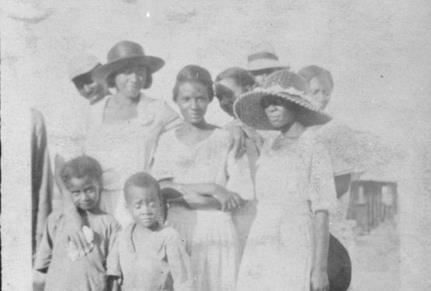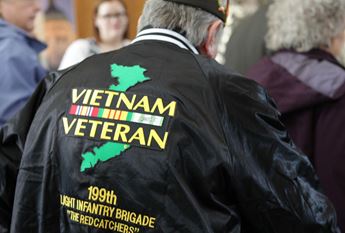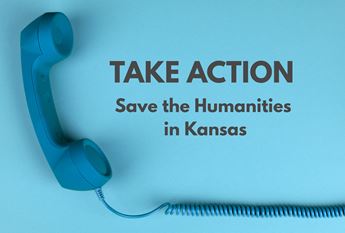

Big Idea: Sharing Women's Stories in Museums
November 12, 2024
The Kansas Museum of History in Topeka is undergoing a major renovation, which will include new exhibits, new artifacts, and an expanded story of Kansas. “Stories of the people—that is what connects museum-goers today with Kansans of the past,” said Dr. Sarah Bell, director of the museum. “We’re bringing people forward, centering them in our storytelling.”
A railroad boxcar home opens the story of Mexican railroad workers and their families in central Kansas. A dugout represents the story of formerly enslaved Black settlers in northwest Kansas. “I love sharing these stories because it makes Kansas so much more interesting and complex,” said Bell.
Uncovering women’s stories requires new research approaches, however. “For me, it’s important to be intentional when researching,” said Donna Rae Pearson, museum specialist at the Kansas Historical Society. Sometimes even finding women’s names is a challenge, since most newspapers in our past would identify a married woman by her husband’s name, and not her own. That can lead to misunderstandings about the important and wide-ranging roles of women in communities.
“If I read a story about a man, I ask myself, ‘Well, was there a woman around? An African American?’ Then I look for their stories,” Pearson said. By asking this simple question, history begins to reveal itself. “Often we have these stories, but they have not been incorporated into the larger story. But history as it happens always includes more voices.
Because women’s stories were often not valued throughout history, they were not recorded as history happened. Bell points to the stories of enslaved and freed African Americans as an example of this; most of those narratives have been lost, and the stories that do survive were often not told by the people themselves.
For many women, race and gender have been barriers. Even the women’s suffrage movement was predominantly led by white women because they were the ones with access to education. “How to bring these and other voices to the story of Kansas?” Bell asked. “You have to dig into primary sources.”
Pearson agrees. “The same techniques I use to research the histories of people of color, I use for women’s history,” she said. “A good researcher will look in different places for those stories. And you will need to craft that story—it’s not going to be in a book for you to pick up and summarize.”
Another unique challenge to museum storytelling: the need for material culture—artifacts—that make history tangible to visitors.
“Our philosophy is to show, not tell,” said Bell. “But when our collections don’t reflect the stories we want to tell, we have to get creative.” Museums can bring these stories forward with digital interactives, images, and artwork. “We want everyone who walks in to see themselves in these stories.”
This creative approach recently led to an important acquisition for the museum. Bell and Pearson invited Angela Bates, a descendant of Nicodemus settlers, to Topeka to view the dugout exhibit. Bates was so moved by seeing her family’s story represented that she donated a hurricane lamp that her ancestors brought with them from Kentucky. The beautiful pink lamp with a floral pattern is a good reminder that the formerly enslaved settlers of Nicodemus were middle class—a detail that interrupts some perceptions many Kansans today have about the community.
“Angela donating these items takes what was a good story with the dugout to the next level,” said Bell.
Expanding the Kansas story requires a constant curiosity and desire to always look beyond the traditional narratives. “There were more people there,” said Pearson when reflecting on history. “I promise you, there were more people there.”
Finding those people and their stories is what drives the museum renovation. “I truly believe that history can teach us empathy, and that’s what museums should be doing: You see yourself, or you see your grandmother, or you see something you can relate to in some way,” said Bell. “That is the joy of museums.”
Dr. Sarah Bell is the Director of the Museum and Education Division, Kansas Historical Society. She holds a PhD in History from the University of Kansas.
Donna Rae Pearson is a Museum Specialist for the Kansas Historical Society and holds a Master’s degree in History from Wichita State.
Spark a Conversation
- INVITE Donna Rae Pearson to your community with her Speakers Bureau presentation "The Women of Brown."
- STREAM Kansas 1972 podcast episode's Women on the Move and Get Up, Stand Up! about the Equal Rights Amendment and the February Sisters.
- EXPLORE the North End Historical Society’s Las Nuevas Adelitas: The Power of Women oral history and short film about the historical and cultural contributions of Mexican American women in Wichita.
- READ stories of women choosing their own path in HK’s TALK book series, “Turning Point.”
- LISTEN to Linda O’Nelio Knoll’s story of the Amazon Army, women protestors in the southeast Kansas coal mines.
- LEARN about the mothers and children of Nicodemus in Angela Bates’ presentation “Children of the Promised Land.” Find out how to bring this presentation to your community.



